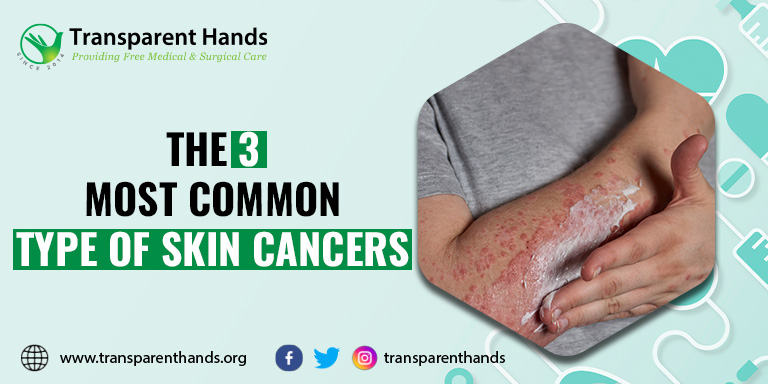The 3 Most Common Types of Skin Cancer

Skin cancer is a widespread and potentially life-threatening condition that affects millions of individuals globally. It arises when abnormal cells in the skin grow uncontrollably, often triggered by excessive ultraviolet (UV) radiation exposure. Understanding the different types of skin cancer is crucial for early detection, timely treatment, and improved outcomes. In this comprehensive article, we will delve into the three most prevalent forms of skin cancer, exploring their distinct characteristics, risk factors, symptoms, and available treatment options.
1. Basal Cell Carcinoma
Basal cell carcinoma (BCC) is the most frequently diagnosed form of skin cancer, accounting for approximately 80% of cases. It primarily develops in the basal cells, which reside in the deepest layer of the epidermis. BCC usually appears on sun-exposed areas, such as the face, neck, and hands. Risk factors for developing BCC include prolonged and unprotected exposure to UV radiation from the sun or tanning beds, fair skin, a history of sunburns, and a family history of skin cancer.
Common symptoms of BCC include open sores that fail to heal or recur, reddish patches or irritated areas, shiny or pearly bumps with visible blood vessels, and pink growths with raised edges and a central indentation. Fortunately, BCC tends to grow slowly and rarely metastasizes or spreads to other parts of the body. Treatment options for BCC depend on the size, location, and extent of the cancer and may include surgical excision, Mohs surgery, cryosurgery, or topical medications.
2. Squamous Cell Carcinoma
Squamous cell carcinoma (SCC) is the second most common among the three types of skin cancer, accounting for approximately 16% of cases. It originates in the thin, flat squamous cells that make up the outermost layer of the epidermis. SCC can develop on sun-exposed areas as well as other parts of the body, including the genitals, mouth, and anus. Similar to BCC, risk factors for SCC involve UV exposure, fair skin, a history of sunburns, and a weakened immune system.
Common symptoms of SCC include persistent scaly red patches, raised growths or lumps with a rough surface, open sores that crust or bleed, and wart-like growths. Although SCC has a higher potential to spread to other areas of the body compared to BCC, it is still highly curable, especially when detected and treated early. Treatment options for SCC depend on factors such as size, location, and stage of the cancer, and may include surgical removal, radiation therapy, topical medications, or photodynamic therapy.
3. Melanoma
Melanoma is the most aggressive of all the types of skin cancer, although it accounts for only about 4% of diagnosed cases. It arises in the melanocytes, the cells responsible for producing the skin pigment melanin. Melanoma can develop within existing moles or appear as new growths on the skin. Risk factors for melanoma include a history of excessive UV exposure, severe sunburns during childhood, a family history of melanoma, fair skin, and the presence of many atypical moles.
Key symptoms of melanoma include asymmetrical moles or growths, irregular or jagged borders, varied colors within the same mole, a diameter larger than 6 millimeters, and evolution or changes in size, shape, or color. Early detection is crucial for favorable outcomes, as melanoma can quickly spread to other parts of the body if left untreated. Treatment options for melanoma may involve surgical excision, lymph node biopsy, targeted therapy, immunotherapy, or radiation therapy.
Conclusion
Understanding the three most common types of skin cancer and warning signs of skin cancer is vital for early detection, prompt treatment, and improved survival rates. Basal cell carcinoma, squamous cell carcinoma, and melanoma each possess unique risk factors, symptoms, and treatment options. By adopting sun-safe practices, performing regular self-examinations, and seeking medical attention for suspicious skin changes, individuals can significantly reduce their risk of developing skin cancer and enhance overall skin health.










Leave Your Comments